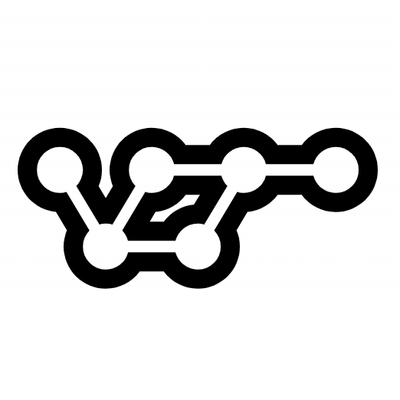
Security News
vlt Launches "reproduce": A New Tool Challenging the Limits of Package Provenance
vlt's new "reproduce" tool verifies npm packages against their source code, outperforming traditional provenance adoption in the JavaScript ecosystem.
create-rindo
Advanced tools
create-rindo is a CLI for creating new Rindo projects based on predefined templates, or "starters". It is the official CLI maintained by the Rindo team, and is recommended for all new projects.
The create-rindo CLI requires npm version 6 or higher to be installed.
For instructions for installing or upgrading npm, please see the npm Documentation.
The create-rindo CLI offers the following starters for bootstrapping your project:
component - allows one to spin up a component library containing one or more Rindo components. Best suited for
teams/individuals looking to reuse components across one or more applications. (Source Code)app - allows one to spin up an application, complete with routing. This is a community-driven project,
and is not formally owned by the Rindo team. (Source Code)family-pwa - allows one to spin up a Family PWA, complete with tabs layout and routing. This is a community-driven project,
and is not formally owned by the Rindo team. (Source Code)The CLI can also generate projects using starters that are not officially developed by Family or the Rindo Community. See the documentation for Command Mode for additional information on using additional templates.
The create-rindo CLI can be run in one of two modes - Interactive Mode or Command Mode.
Interactive Mode allows a user to interactively select options for creating a new Rindo project. create-rindo can be started in Interactive Mode by running:
$ npm init rindo
Running the CLI in Interactive Mode will prompt you to select one of the available starters to use:
$ npm init rindo
✔ Select a starter project.
Starters marked as [community] are developed by the Rindo Community,
rather than Family. For more information on the Rindo Community, please see
https://github.com/rindo-community › - Use arrow-keys. Return to submit.
❯ component Collection of web components that can be used anywhere
app [community] Minimal starter for building a Rindo app or website
family-pwa [community] Family PWA starter with tabs layout and routes
Followed by a name for your new project:
✔ Project name > my-rindo-library
After confirming your selections, your project will be created.
In this example, a new component library starter will have been copied into a newly created my-rindo-library directory:
✔ Confirm? … yes
✔ All setup in 29 ms
We suggest that you begin by typing:
$ cd my-rindo-library
$ npm install
$ npm start
You may find the following commands will be helpful:
$ npm start
Starts the development server.
$ npm run build
Builds your project in production mode.
$ npm test
Starts the test runner.
Further reading:
- https://github.com/rindojs/rindo-component-starter
- https://rindojs.web.app/docs
Happy coding! 🎈
Command Mode allows you to create a new Rindo project by specifying all project options upfront.
To run the CLI in Command Mode, a starter and project name must be specified:
npm init rindo [starter] [project-name]
An example of creating a component starter with the name "my-rindo-library" is shown below:
npm init rindo component my-rindo-library
In the example above, a new component library starter will have been created in a newly created my-rindo-library directory.
In addition to the provided template options, users may choose to use one of their own custom templates hosted on GitHub.com.
To use a custom starter template, provide the GitHub repository owner and repository name as the starter name, using the format REPO_OWNER/REPO_NAME.
For example, to retrieve a template that is owned by 'my-organization' that has the name 'my-rindo-template':
npm init rindo my-organization/my-rindo-template my-rindo-library
The command above will create a copy of the my-organization/my-rindo-template repository, and place it under my-rindo-library on disk.
This can be used in conjunction with Self Hosted GitHub Instances to use custom starter templates that live on a self-hosted GitHub instance.
Note: When passing flags to the create-rindo CLI, a double dash ('--') must be placed between npm init rindo
and the flag(s) passed to the CLI:
$ npm init rindo -- --help
--help, -hThe --help flag shows usage examples for the CLI.
--infoThe --info will print the current version of the CLI.
https_proxyIf you are behind a proxy, the https_proxy environment variable can be set when running the CLI:
$ https_proxy=https://[IP_ADDRESS] npm init rindo
Rindo uses https-proxy-agent
under the hood to connect to the specified proxy server.
The value provided for https_proxy will be passed directly to the constructor for a new
HttpsProxyAgent instance.
rindo_self_hosted_urlIn some scenarios, teams may find themselves working solely out of a self-hosted GitHub instance.
Users wishing to point the create-rindo CLI at a GitHub instance other than GitHub have two options:
Set rindo_self_hosted_url in your .npmrc file, like so:
// .npmrc
rindo_self_hosted_url=https://your_self_hosted_github_repo.com/
Using this option, the CLI can be called as such, automatically picking up the value in rindo_self_hosted_url:
npm init rindo [starter] [project-name]
Set rindo_self_hosted_url at invocation time:
rindo_self_hosted_url=https://your_self_hosted_github_repo.com/ npm init rindo
When using this option, rindo_self_hosted_url must always be set every time the CLI is called.
When both options are set, the value provided on the command line takes precedence over the value in your .npmrc file.
FAQs
Quickly create a new rindo component project: npm init rindo
The npm package create-rindo receives a total of 2 weekly downloads. As such, create-rindo popularity was classified as not popular.
We found that create-rindo demonstrated a healthy version release cadence and project activity because the last version was released less than a year ago. It has 0 open source maintainers collaborating on the project.
Did you know?

Socket for GitHub automatically highlights issues in each pull request and monitors the health of all your open source dependencies. Discover the contents of your packages and block harmful activity before you install or update your dependencies.

Security News
vlt's new "reproduce" tool verifies npm packages against their source code, outperforming traditional provenance adoption in the JavaScript ecosystem.

Research
Security News
Socket researchers uncovered a malicious PyPI package exploiting Deezer’s API to enable coordinated music piracy through API abuse and C2 server control.

Research
The Socket Research Team discovered a malicious npm package, '@ton-wallet/create', stealing cryptocurrency wallet keys from developers and users in the TON ecosystem.